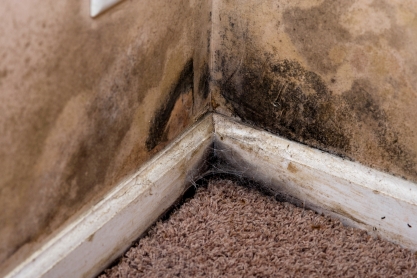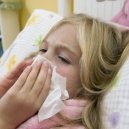Find a pre-screened local mold removal specialist Free Estimate
Find a Mold Specialist Now
Click or Call, Toll-Free 24/7
Exercise Intolerance From
Mold Exposure
Are you having difficulty hitting the gym or completing your morning run? You could be suffering from exercise intolerance. This condition is characterized by an inability to produce the energy required to raise your heart rate and get active. For people who are used to daily workouts, it can also cause distressing and uncomfortable symptoms. While it is common for patients with acute health issues like diastolic heart failure or cystic fibrosis, it is even more shocking to realize that an inability to exercise can develop in otherwise healthy, athletic men and women.
Medical experts agree that indoor mold exposure can cause significant problems with your breathing and energy. If sudden respiratory problems occur or nausea and fatigue are making you feel out of shape, learn more about how mold can significantly impact your health and how to get assistance for yourself and your family.
What Is Exercise Intolerance?
When people experience exercise intolerance, they are incapable of getting active for what would be considered a reasonable duration. People who are accustomed to doing yoga, hiking, or kayaking find their favorite activities suddenly become impossible. Symptoms of the condition include rapid or shallow breathing, acute pain, severe fatigue, muscle weakness, or an abnormally fast heart rate. Some people also experience severe nausea, vomiting, and dizziness.
Patients may receive a diagnosis from their doctor for this issue when they have a related health condition or when there is no other reason why they would be having trouble exercising. Their treatment regimen depends on their current health and the type of symptoms they are having.
How Mold Exposure Affects Your Exercise Routine
While most athletes often focus on avoiding outdoor pollutants like smoke and pollen, the Center for Disease Control and Prevention (CDC) reports that indoor mold can cause significant health concerns like coughing, wheezing, throat pain, burning, itchy eyes, and yes, even exercise intolerance. If you are one of the people unlucky enough to have mold allergies, severe reactions can also occur, including asthma attacks and long-lasting lung infections.
When toxic mold spores in the air in your home make it difficult to breathe, the amount of oxygen in your bloodstream and lungs decrease. Your muscles can lose their ability to utilize oxygen properly, metabolize nutrients, and generate sufficient energy. Since lack of exercise can lead to even poorer health, it is essential to talk to your doctor if you think you have symptoms, especially if they last for more than a few weeks.
 Mold on carpet and walls
Mold on carpet and wallsTalking To Your Doctor
If you are suddenly having difficulty exercising without any reason, visit your doctor for a thorough physical examination. Since being active is vital to our short and long-term health, it is essential to find a solution to your inability to exercise. You can discuss and evaluate your symptoms to determine if you are suffering from another condition like cystic fibrosis, cardiac arrhythmia, post-concussion syndrome, or chronic fatigue syndrome. Your doctor may also ask if anyone else in the home is experiencing the same type of problems.
If no other conditions are present and your doctor does not find any other reason for you to have trouble exercising, they may recommend treatments like oxygen supplementation or the use of a bronchodilator to make activity more tolerable. They can also guide you on when and how to return to physical activity. An intense rehabilitative exercise training regimen may be prescribed. In some cases, they may also recommend a home mold evaluation to determine if the causes of your exercise intolerance are coming from the inside.
Avoiding Further Mold Exposure
The effects of mold exposure can be serious. Some people who are allergic to mold may even end up in the hospital. If there is no underlying reason for your sickness and you suspect you may have mold in your home, there are things you can do to protect your family and get well again. First, avoid further development of mold by adequately ventilating all moisture-prone areas. These areas include your shower, bathtub, kitchen, and laundry room. Humidity contributes to mold spore development. Purchasing and using a dehumidifier can keep high levels of humidity away.
It is also wise to fix leaky pipes or roofs, which can add to mold-causing moisture. In addition, clean and dry all wetness that appears after you take a shower or use a sink. It is also helpful to have a professional mold inspection completed in your home to determine if toxic mold spores are causing your health issues. Without detection and removal, mold will continue to affect you and may make you and your loved ones sicker.
For Help With Mold Removal
If you think mold could be making you ill or keeping you from enjoying the activities you love, have a mold inspection completed by a qualified professional. An expert technician can thoroughly examine your home to detect mold and come up with a remediation plan.
Thankfully, many people find that the removal of mold in their home fixes symptoms of exercise intolerance or respiratory distress quickly. You can schedule a free in-home consultation with an experienced mold removal company in your area to look for signs of mold in your home. Even if you decide to remove the mold yourself, a professional evaluation can provide you with expert advice at no-cost. Follow the link to find a list of qualified mold removal professionals in your area.
Free Home Inspection By A Mold Removal Specialist
Search This Website

Recent Articles
-
See Our 5 Recommended Mold Removal Companies in Covington, KY
Apr 16, 25 12:59 PM
-
See Our 5 Recommended Mold Removal Companies in Wheaton, IL
Jun 20, 24 10:33 AM
-
See Our 5 Recommended Mold Removal Companies in Aberdeen, SD
Oct 08, 21 04:05 PM




